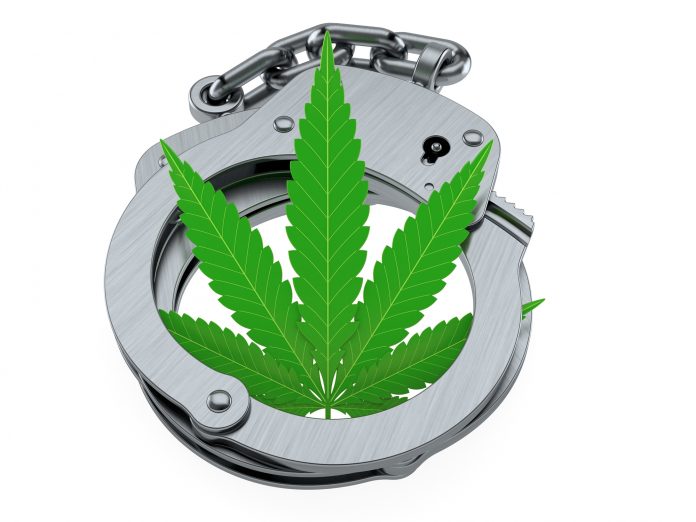By Randy Robinson
Volume 5 Issue 1
On January 13th 2017, Denver’s Hoban Law Group – on behalf of three prominent hemp companies – filed a lawsuit against the US Drug Enforcement Administration (DEA) over the creation of a new category for marijuana products.
In December 2016, the DEA quietly filed a rule setting a new classification for “marijuana extracts” and placing them in Schedule I category – along with traditional marijuana and heroin.
According to the DEA, the new rule clarifies their long-standing position that any component of the cannabis plant, including its dozens of cannabinoids, are considered Schedule I substances. This includes CBD, a molecule that may confer many of the same medicinal effects as THC but without the psychoactive effects THC has that gets people high.
In truth the new rule puts the entire US hemp industry at risk. Hoban filed its lawsuit on behalf of Centuria Natural Foods and the Hemp Industries Association in California, and RMH Holdings based in Colorado. Hemp, which is defined as any cannabis plant with a negligible amount of THC (less than 0.3 percent), falls under the Schedule I designation with marijuana, even though hemp cannot get anyone high. In the US, and particularly in Colorado, hemp is grown primarily for CBD extracts for infusions into oils, tinctures, lotions, and other non-psychoactive products.
The DEA rule may also be at odds with the Agricultural Act of 2014, known colloquially as “The Farm Bill.” In this bill, hemp farming, harvesting, and production is permitted under federal law so long as an operation adheres to its state laws. In Colorado, hemp is defined separately from “marijuana,” and its cultivation is allowed under strict regulations.
In an e-mail to The Cannabist, the DEA defended its position:
Under U.S. law (the CSA), the definition of marijuana includes all parts the cannabis plant that are the source of cannabinoids. The CSA definition of marijuana also includes “every compound, manufacture, salt, derivative, mixture, or preparation” of such parts of the cannabis plant – and CBD produced from the cannabis plant clearly falls within this category. Thus, CBD, being a derivative of marijuana, is marijuana under U.S. law (and hemp is marijuana). Accordingly, because marijuana is a schedule I controlled substance under the CSA (as set forth in 21 U.S.C. § 812(c), Schedule I(c)(10)), CBD is a schedule I controlled substance under the CSA.
The extract category includes any extraction product from the cannabis plant, including shatters, waxes, cooking oils and fats, tinctures, salves, and hash. By creating this category, the DEA says they can now distinguish these extracts from the catch-all category of simply “marijuana,” which includes resins and flowers of the cannabis plant.
Although the DEA’s rule may appear to be a simple book-keeping procedure, the US hemp industry fears this move broadens the DEA’s authority over not just cannabis products, but any product containing cannabinoids, regardless of psychoactive potential or biological source.
Garrett O. Graff, an attorney with the Hoban Law Group, says this new rule is an overreach of the DEA’s authority.
“The problem here is that marijuana extract is not a controlled substance,” Graff told Kurple. “There’s no listing of marijuana extracts under the Controlled Substances Act. The DEA didn’t engage in any rule-making procedures, which are very expressly prescribed and are rather stringent. The DEA is exceeding its rule-making authority by defining marijuana extracts to include components that are, in fact, not controlled substances.”
According to Graff, the only cannabinoid that is federally outlawed is THC, and even then, he says that only applies to synthetic THC, not THC that is naturally occurring. Furthermore, cannabinoids themselves are not solely produced by cannabis. There are a number of other biological sources for cannabinoids, all of which are 100 percent legal and unregulated.
For instance, cannabinoids are produced by the cacao plant. Most chocolate products contain trace amounts of the cannabinoid anadamide, which is chemically similar to THC. Certain varieties of South African flowers also produce cannabinoids. It is even present in breast milk – including human breast milk – indicating a mother’s chest could, technically, be considered contraband under the DEA’s rule.
“From a practical level,” says Graff, “the presence of cannabinoids is not unlawful, nor is it practical that any regulatory agency could appropriately regulate cannabinoids and where they’re coming from.”
In regards to hemp, Graff notes certain parts of the cannabis plant are excluded from being considered “marijuana.” These are parts of the plant with nearly non-existent levels of THC, such as the stalks, the stems, the hurds, and the seeds. THC is most heavily concentrated in the flowers and glandular trichomes generated by the cannabis plant. As anyone who has done it will admit, the only cerebral effect that comes smoking marijuana stems is a headache.
Hoban Law Group and their clients hope the lawsuit will accomplish one of two things: either to force the DEA to go through the proper channels by getting a law passed by the US Congress, or to drop the new rule altogether.
According to projections from the Hemp Industry Association, one of the plaintiffs in the suit, the American hemp industry is currently worth just over half a billion dollars. ArcView Market Research estimates the cannabis industry, as a whole, may generate over $7 billion in 2017. By 2026, the industry could be worth a whopping $50 billion, far exceeding the domestic profits of Hollywood films. With the boons marijuana is contributing to the economy, now is not the time to go backwards in our legal understanding of the plant.


















